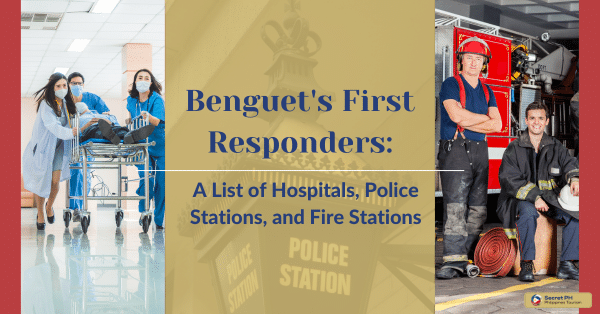The innovations in Philippine Emergency Services aim to improve response times and save lives in emergencies. The advancements in communication technology, better training and equipment, and community involvement are key drivers of improvement. With reduced response times, increased resources, and improved efficiency, the Philippines can better handle emergencies and ensure the safety of its citizens.
This blog will delve into the innovations currently underway in Philippine Emergency Services, exploring the ways in which technology, training, and community involvement are contributing to these improvements.

Emergency Services in the Philippines
Emergency services are a vital component of any society, providing crucial assistance in times of crisis and saving lives. The Philippines is no exception, with a well-established emergency services system that has been working to meet the needs of its citizens for many years.
The emergency services in the Philippines are comprised of a range of organizations and individuals, including emergency medical services, firefighters, law enforcement, and disaster response teams. These services work together to respond to emergencies and provide aid to those in need.
However, the emergency services in the Philippines face a number of challenges, including limited resources, outdated equipment, and insufficient training. Despite these challenges, the emergency services continue to work tirelessly to provide the best possible response in emergency situations.

Examples of Innovations Used to Improve Philippine Emergency Services
The Philippines is known for its strong sense of community and resilience, so it’s not surprising that the country has made numerous improvements to emergency services in order to better protect citizens. Here are some examples of innovations used to improve emergency services in the Philippines:
Automated Dispatch Systems
Automated dispatch systems are one of the key tools used to strengthen Philippine emergency services. The implementation of these systems has greatly improved the ability of Philippine responders to efficiently locate, assess and eventually respond to any emergency situation in a timely manner.
Automation allows responders to quickly access pertinent information with ease while simultaneously providing improved communication between field responders, crisis management centers or the public, who can now answer calls much faster and without disruption; this leads to vital improvements in the overall quality of service.

Updated Emergency Communications Equipment
The Philippines has seen tremendous growth in technology and infrastructure, including the use of a variety of innovations to enhance the emergency services for the population. Updated emergency communications equipment is one such example, delivering fast response times necessary for medical, firefighting and security responders to act quickly in any situation.
Additionally, advancements in GPS tracking have been put into play allowing responders to find incidents with pinpoint accuracy even in hard to reach or rural areas. Technology improvements have also enabled organizations like FEMA to monitor potential disasters and alert people living nearby about destructive weather systems.

Connectivity and Response Time Improvements with Mobile Technology
The Philippines has made impressive strides in moving emergency services into the modern age by utilizing new technologies to improve response times and ensure efficient communication between service responders and those in need.
Connectivity is greatly improved through the integration of mobile technology, allowing responders to quickly contact each other in the event of an emergency while providing quicker access to much-needed medical attention or aid. From faster access to resources such as dispatch mobile apps, updated online mapping services, and even better vehicle tracking.

Online Training and Certification Programs
Providing efficient emergency services to the Philippines is an ongoing issue, which has been addressed through innovative efforts by local authorities. Online Training and Certification Programs are at the forefront in teaching essential skills and improving response times in the country’s emergency services industry.
With improved access to training and certification programs via the internet, fire personnel have greater opportunities to further their knowledge and develop professional qualifications that make them better equipped to manage crisis situations. As a result of these developments, actual emergency responses shift from anxiety-filled situations toward more methodical approaches for dealing with perilous events.

The Impact of Innovations on Philippine Emergency Services
The Impact of Innovations on Philippine Emergency Services looks closely at how the country’s healthcare, firefighting, and law enforcement teams are taking advantage of new developments to better respond to in-need citizens. From the use of drones to improved communication networks, we look at how modern technology can help decrease response times and improve safety while operating as cost-effectively as possible.
Faster Response Times During Emergencies
The Impact of Innovations on Philippine Emergency Services introduces us to the potentially life-saving potential of new technologies. Technology can help improve the way emergency services are offered, from faster response times and better management of resources to an improved overall user experience for those in need.
For example, integrating automated services with traditional responses would allow emergency personnel to react more quickly during emergencies; routing calls faster based on users’ locations would ensure that those in need get assistance promptly.

Lower Mortality Rates in Emergency Situations
There were once serious limitations to the resources available to Philippine emergency services and innovators have worked hard to find solutions that can be implemented to upgrade vital technology, equipment, and personnel capabilities.
The result has been a reduction in the number of fatalities due to improved response times, increased convenience for patients by use of digital networks, and better access overall that enables responders to offer more comprehensive service and match their decisions with best practices quickly.

Increased Efficiency and Cost Savings
The introduction of automated and digital services within the country’s emergency departments have increased efficiency, while further implementation of these systems could result in massive cost savings.
Updated technologies and processes allow for quick responses to a range of situations, significantly reducing wait-times and progression down predetermined department procedures. As such, it is essential for Philippine Emergency Services to remain mindful of the changes modern innovations bring with them as we strive toward a more accessible and effective system.

In Conclusion
The recent advancements in emergency services technology have been a major benefit to the Philippine islands, enabling emergency responders to minimize response times and save lives with greater efficiency. From automated call routing systems to real-time tracking of available rescuers, these technologies allow for more streamlined processes and better communication between rescuers and victims.
Devices such as drones are being used to locate victims faster and more safely, while new methods of data sharing are speeding up rescue operations. Overall, it can be concluded that innovations in emergency services have proven to be a lifesaving resource in the Philippines that is increasingly proving its worth day by day.








